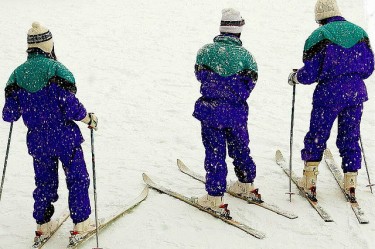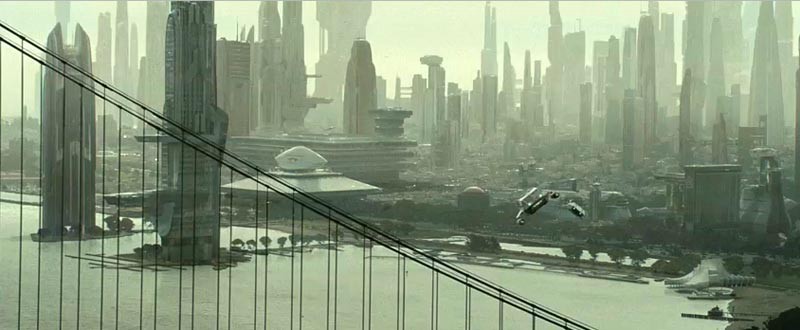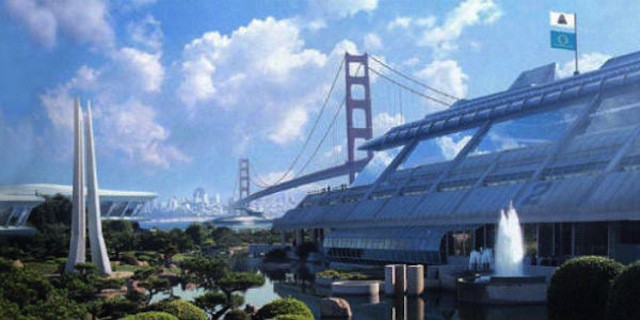The Neurotic's Guide To Skiing
by Jesse Singal

So you are a neurotic person who wants to learn how to ski. Not “neurotic” in the infuriatingly loose sense in which normal, highly functioning people use it (“Okay, like, I hate to be noo-rot-tick, but I really think we should leave this party to get to the other party because my friends are at the other party and might leave it soon.”), but actually neurotic, sometimes cripplingly so: Your brain doesn’t work like other people’s brains. Your thoughts are often sputtering satellites orbiting singularities of infinite worry. Sometimes when you get a call and see that it’s your mom you’re sure that when you pick up she’ll be crying since someone close to you has died.
You’ve known you’re neurotic for a long time; it has stuck with you and you’ve internalized it. Every new experience you consider — Capoeira or Nepalese food or yoga or, as it happens, skiing — is accompanied by a series of questions that would never arise in the head of a normal person. What if you try some Capoeira move (do they have “moves” in Capoeira?) and seriously injure yourself and you never walk quite the same again and what’s left of your 20s is shuffled away in an endless series of physical therapy appointments? Or what if you order some choyala that’s too spicy at the Nepalese place and you keep asking for water after water and all the waiters and patrons — many of whom will be attractive women out on dates with people who effortlessly inhale spicy food like it’s Gatorade and they’ve just run a marathon — look at you and shake their heads at how uncultured and inexperienced and just overall soft you are? Your head is a machine built primarily to weave disaster movies out of life.
But despite all this, for whatever reason, you decide to learn how to ski. Here’s how to make it work; here’s what will happen and how it might change you.
1. It’s your first day and you arrive for your first lesson at the foot of a little “bunny slope,” as they call it, the actual, adjacent big-kids mountain safely out of sight somewhere. At first they’ll teach you to make a slice of pizza (or pie or whatever), to keep your skis parallel when you want to go fast or turn and to slow down by pointing them toward each other. Spoiler alert: This isn’t actually how you ski. But that’s okay. For now, this is how you, the neophyte, should ski. Practice making pizza.
Since you’ll be on the little bunny slopes at first, your perpetually jittery brain won’t, for the most part, shoot liquid mortal terror into your veins. Not yet. Instead, the heavy self-consciousness that has dogged you since puberty will leap onto your back like a starving deranged primate. There you’ll be, on a slope that’s really more of a plane, trying to get this unwieldy body of yours — top-heavy, limbs shooting out in every direction like pine boughs, your center of gravity somehow located 20 feet above you and to your right — to turn and glide, turn and glide, to make pizza. And all the while you’ll be surrounded by two-year-olds far more adept than you, their tiny simple brains concerned with nothing more pressing than the source of their next juice box. What must you look like? What must the ski instructors think of you? They are probably really hot, though it’s hard to tell under all the poofy ski clothes and goggles. Also, you’re older than all of them now! When did that happen?
You can’t worry about any of this. You need to let it go. Focus. Look: You’re doing it. You haven’t fallen in a few minutes.
2. Now it’s on to actual slopes — green circles, which are for beginners. Here a tsunami of crappy childhood memories related to fear and paralysis and exclusion will flood your consciousness. For example: Do you remember the time the kids in your neighborhood were climbing that tree near your house? They found one of the highest branches and jumped off of it into a pile of leaves, over and over, an endless routine on an endless Saturday, screaming and laughing each time like it was their first time ever climbing a tree, their first time ever crashing into a pile of leaves. What did you do? You climbed to the top, thinking it would be fine. But when you got there, when you stood up on that branch, palm against the reassuring solidness of the trunk, you looked down and saw catastrophe, saw demise, saw injury and grief. So heavy for a six year old. You couldn’t move. You just stood there.
“Get my mom,” you called down, voice higher and quicker than usual. And they did, but you’re positive they never looked at you the same after that. In lonely moments you imagine them, these kids you haven’t seen in almost two decades, standing shoulder-to-shoulder in thronged bars in Boston and New York and Philly and DC, clucking and laughing at your childhood cowardice. Which makes no sense.
So now here you are, fresh off the chairlift (How safe can those things be, really? How often does the state of Vermont inspect them? What was that weird grinding vibration you felt on the way up?), facing your first solo run down a green circle. And it’s the same shit as always, the same inability to not be afraid, to be normal. Even this looks pretty steep. How are you possibly going to get down? Won’t one of the expert skiers, still riding the momentum he picked up during his triple-black-diamond adventures two thousand feet up the mountain, slam into you when you make one of your clumsy, ultra-wide turns, concussing both of you in the process? Or what if one of your crappy rental skis comes off while you’re headed straight toward the trees at the edge of the trail? Or what if, once you’re back in the lift line, you take off one of your gloves to check to see if anyone has called or texted you (nope) and somehow lose it, and then your only choices are to ski with one glove or to shell out an asinine $70 for a new pair from the lodge?
These are all things that could happen. But the whole point of skiing is that you’ll never get half-decent at it just standing there immobile at the top of the trail worrying about everything. Just go. I can’t promise you you’ll be fine — only a charlatan could promise you that — but I think you probably will be.
3. You’ll always think you are going to lose a toe or foot to frostbite because your feet have been numb for hours. That’s just how ski boots work. You’re not going to lose a toe or foot to frostbite.
4. When you inevitably wipe out under a heavily trafficked chairlift and some teenage snowboarders gliding by overhead laugh at you or spit on you or yell something stupid at you, ignore them. They are assholes. Ignoring assholes has never been a strong suit for you, has it?
5. Now it’s a year or two later on the blue squares, the intermediate trails, and two things happen: First, you have your first spectacular, blooper-reel falls; and second, despite those wipeouts, in your belly you sense the germ of something promising that could possibly explain this whole skiing thing.
You feel a little bit like a skier now. No more pizza for you. You keep your skis parallel most of the time. You “hockey stop” by swooping your parallel skis from 12 o’clock to 3 o’clock or 9 o’clock in half a second, coming to a rest almost immediately and kicking up a satisfying little cloud of powder that hangs there for a second refracting the low winter sunlight and making it seem like you know what you’re doing.
None of this is easy, of course. Before each run you still find yourself taking a deep breath, trying desperately to chase from your head gruesome visions of bone pulverization and tendon evaporization. They flee for a bit, but like rabbits staking out a garden as soon as you divert your attention they return to feast.
Still, you go a little faster. You were skiing too slowly on the green circles for your falls to be anything but gentle chest-bumps with clumsiness. Now, actual speed brings actual falls. The worst comes when you’re headed down an unfamiliar trail and you hit a crest you didn’t realize was a crest and suddenly the downward grade goes from moderate to severely moderate and instead of adapting on the fly like an expert skier you freak out and flail like the intermediate skier you are. You turn too abruptly to the right and your skis cross and now you’ve lost all control and for a moment you’re going backward, then your skis uncross and the left one is up in the air and the right one is on the ground and you’re headed across the trail, toward the trees. A few more seconds of this off-balance one-legged skiing, this drunken-pelican skiing, before you slam your left ski down, overcompensate rightward, and fall hard on your right shoulder. At the moment of impact there’s a brutal crunch and festively hued spots firework onto your vision. When the powder clears your skis are off, one lodged into the mountainside like a shank, the other gliding gently to a rest a few feet away. Your poles, still attached to you by your wrist straps, are splayed out in front of you, a less-than sign of failure: You are less than this mountain.
“You all right, dude?” says a skier who flawlessly hockey-stops a few feet from you, someone for whom this trail is easy like breathing.
Are you all right? You stand up gingerly and think about it. Surprisingly, you only obsess about catastrophic injuries for a few seconds, because the answer comes quick as you brush a sheen of icy snow from the front of your jacket and retrieve your orphaned skis: Yeah, you’re all right. You’ll be sore tomorrow and you’ll have ugly blotchy bruises for awhile, but you’re all right.
You ski the rest of the way down, cautiously but crisply, and you find yourself grinning maniacally in the lift line. You’re all right, dude. You’re all right. This, it turns out, happens fairly frequently: Horrible-seeming falls don’t turn out to be all that horrible once you’re upright again.
There’s something to this, some reason you suddenly decided, sitting alone in your biohazard kitchen while your roommates partied elsewhere a year or two ago, to start skiing, but it isn’t quite fully formed yet, and in your head a formidable entrenched counter-neuroinsurgency is frantically trying to prevent it from spreading. Just leave it alone for a bit. Just focus on getting down the mountain.
6. The sign by the lodge promises Refreshments. But for the mountain’s owners to display photos of thick hot creamy broth laden with clam and potato to very hungry, very cold people who have already paid an eye-bulging amount for the privilege of skiing, and to then attempt to charge them $9 for a thimbleful of it, isn’t just a ripoff — it’s a betrayal.
7. Now it’s a few years later and you can do most of the trails on this mountain. And with less cognitive energy expended on the task of not dying, you drift toward an area that has always made you profoundly uncomfortable: self-help-ish, meaning-of-the-good-life-type philosophizing.
Because face it: These slopes are littered with cheap, flatfooted metaphors. But are they really cheap and flatfooted, or are they waypoints that could help steer you on your endless halting journey toward something like normalcy?
You’re exactly halfway between 20 and 40, now, and you feel your two selves warring. Twenty-year-old you wants to cast aside these metaphors like gaudy designer clothes. They fit too well, are too stylish; their easy answers can’t possibly offer anything like truth. But 40-year-old you is tired of trying on clothes that don’t fit, tired of hating on everything, and realizes that at some point fucked-up people need to figure out ways to thrive a little bit here and there.
And there’s something to this mountain and to the process of endlessly going up and down it. For example (and maybe this is a stretch): Are you going to ski (live) down the mountain (life) with crisp, quick turns (confidently and with direction), or are you going to ski (live) down the mountain (life) fearfully (fearfully), failing to turn as often as you should, simply edging down on the side of your skis, plowing off what little snow there is over the unforgiving ice beneath, ruining things for whoever is behind you (being a burden on your friends and family)?
Okay, so that was a bit clumsy, but after a particularly satisfying run, when you’re able to go ten, even 15 minutes without an intrusive thought jamming itself into your consciousness, when all your brainpower is attuned to the visceral, to the immediate, to the present, after you slam into a satisfying crunchy stop at the bottom of the slope, you can’t resist this weird welling you feel, lame and Hallmark-y but very much there nonetheless. Pride has never lit easily in you, its flames have always licked weakly upward for a second or two before being snuffed out by something or other. But here, layer over layer over layer over icy sweat over skin, you can’t help it: You’re proud of yourself, proud that someone like you made it down a trail like that so easily. And sure, there are those same malevolent energies still swirling somewhere in your brain, manifesting themselves as a small little hateful man slow-clapping and saying “Congratulations!” in a shrill, venomously sarcastic voice, but you know what? Fuck him.
8. And now it’s a few years later again and you’re up on the mountain with your friend Greg, a lanky chain-smoking snowboarding maniac. Greg’s from California and won’t shut up about Lake Tahoe and how this Vermont shit doesn’t compare to it (“Dude, in Tahoe, it would be 45 degrees right now and it woulda dumped 16 inches of fresh powder on us last night.”). You’re good, now, ready to attack terrain that would have been off-limits just a couple years ago: moguls and glades and off-trail woods. But Greg is better than you, and you keep chasing him into the woods against your better judgment. This is progress: five years ago you would have taken the easy way down, would have imagined the thwack of your head against a tree trunk rather than the potential triumph of escaping the woods unscathed.
You’re less resistant to the metaphors than you used to be. You’re still neurotic and fucked up, you still jerk awake in the middle of the night terrified for no reason, you still secretly believe people hate you, but some part of you is getting a little sappy and you find to your surprise that you like it, you welcome it after so many years of unrelenting cynicism.
When skiing moguls and woods you really can’t let the fear get to you, because the key in both instances is an endless procession of quick, precise turns. If you’re scared, if you slow down too much, you can’t turn fast enough and you end up just sorta standing there motionless, unsure what to do next.
You’re a little jealous of Greg, who barrels through the pines like an avalanche, who never seems to consider the fact that it really is dangerous to weave between trees spaced just a few feet apart, to zoom through the woods snapping twigs off boughs like a psychotic landscaper. You’re jealous of him in the same way you’re jealous of people who can approach women at bars, jealous of people who have elevator pitches, jealous of people who can morph themselves into the proper shape for any social or professional occasion. But you’re not as jealous as you used to be, you’re finding increasingly that you can appreciate them for who they are and Greg for who he is and even you for you who are.
For now, the key thing is to get through these fucking trees. Get through these trees and then figure out a way to handle whatever comes next.
Previously by this writer: Can ‘Diablo 3’ Point Us Toward A Grand Unified Theory of Nerdrage?
Jesse Singal is contributing writer at Newsweek/The Daily Beast and a master in public affairs candidate at the Woodrow Wilson School of Public and International Affairs. You should send him an email filled with vitriol and/or encouragement at this address. Photo by Jesslee Cuizon.
New York City, January 7, 2013

★★★★ Now there was even a little light to spare. The image of the sun itself flashed orange-red off the windows of New Jersey, and then illumination flooded their faces, sending warm tones reflecting back east off the surface of the river. The buildings downstream brightened into blocks of creamy light and dusty-blue shadow. Out on Broadway, the upper panels of a breakfast cart’s shade umbrella flared silver like a photographer’s umbrella reflector. Downtown, a woman hurried up the street, glancing at a communication device, with her long puffy coat unzipped and flapping behind her. Two men, one after another, were dressed for indoors, but with plaid mufflers wrapped around their necks. The public was divided on the question of whether to have kept their coats and shed their bundling-up accessories, or to have kept the accessories and shed the coats. Even after 5 o’clock, a glow remained in the sky, and the breeze was merely bracing.
Bear's Year Ends Badly
“Not all encounters with bears had a happy ending this year. Albert E. Smythe of Lanark Village was arrested by sheriff’s deputies on Oct. 3, for shooting a black bear and attempting to hide his actions after FWC officers investigated an incident that took place at Smythe’s home on April 10. Initially, Smythe claimed to have witnessed a hit-and-run involving the bear but further investigation showed the bear had been shot.”
11 Disneyland Rides From Terrible To Awesome

11. It’s A Small World: Burn it down when it’s full of church youth groups.
10. Splash Mountain: Some kind of offensive/idiotic Old South/Slavery thing going on here, very loosely based on the disappeared Disney cartoon feature Song of the South. The set pieces only serve to remind you that this supposed thrill ride is a long, lame experience that’s never worth the wait.
9. Autopia: The charming idea of a miniaturized Pasadena freeway from the brief golden age of California car culture is ruined by the gasoline industry propaganda and cancer-spewing go-karts that consistently die on the track. Why aren’t the little cars powered by batteries or hybrid systems, the way so many cars in the Disneyland parking lots are powered by batteries and hybrid systems? Because then Chevron couldn’t use the ride to brand pre-schoolers’ minds with the need for endless war to procure oil supplies in Central Asia and the Middle East.
8. The entirety of the California Adventure park: Not even the elaborate new Cars ride can help California Adventure. Raze the whole thing and put the new Star Wars theme park (maybe an entire Tatooine?) here instead. (The Cars desert backdrop could hold the new pod-race ride.)
7. Anything branded with Koch Brothers’ nature-raping corporate signage: All of the unloved “Critter Country” seems to be covered in Koch Brothers’ branding, including the Bounty paper towels and Dixie paper cups advertisements on every surface. It’s supposed to replicate the pristine nature of early America, this “Critter Country,” and yet everything is sponsored by the opera-loving high-rise dandies who plunder the nation’s resources from public lands so that landfills can be stuffed with paper cups and paper towels.
6. Frontierland canoes: This is not really a “ride,” because you actually row the canoes. It’s the only Disneyland attraction powered by the humans who pay money to go to Disneyland — as such, it is rarely crowded even on very busy days at the park. The guides will complain the whole time because nobody knows how to row a boat, but it’s still fun and relatively quiet and you get to slip between the Huck Finn rafts and the Mark Twain riverboat and that pirate ship. Like the rafts to Tom Sawyer’s island, the canoes aren’t attached to any kind of underwater track or pulley. You’re on your own, and could actually fall out and drown in the dyed-green five-feet-deep water!
5. Jungle Cruise: The Indiana Jones ride is right next door, but this old attraction does the 1930s colonial adventure even better. The dock terminal is a perfect set of rope and wood and old junk, and the swamp boats look and feel as old as they are — the ride opened when Disneyland opened, in 1955.
4. Pirates of the Caribbean: Even the Jack Sparrow/Johnny Depp add-ons haven’t harmed this eerie classic boat ride from New Orleans to the pirate isles. It was the last ride that Walt himself oversaw, and despite being 45 years old it’s still the richest and most immersive world in the whole theme park.
3. Star Tours: It re-opened a year ago with various new features, with the biggest improvements in the line. Now everyone gets to laugh as moronic TSA robots mistake blasters for hair dryers and insult the children. Just like a real airport, but funny instead of tragic, and the TSA robots don’t rectally probe you like at JFK or LAX. The flight-simulator 3D ride itself is a near-perfect parody of flying on Southwest Airlines.
2. Haunted Mansion: The holiday version based on The Nightmare Before Christmas is fun, but it’s the classic Disney Haunted Mansion that remains amazingly creepy and satisfying. If, like me, you grew up coveting the mysterious and majestic mansions of New Orleans’ Garden District, the exterior is as good as the ride itself. And the ride itself — which actually happens in a separate, hidden building — is a wonderfully sinister occult experience that would’ve never been green-lit in the Moral Majority/Christian Right hysteria of the 1980s or Fox News world that has existed since the late 1990s. Good thing this ride’s “doom buggies” first took passengers in 1969, the age of America’s insane and too-brief Occult Revival.
1. Space Mountain: If you want to see what the future looked like to people of the late 1970s, this is your portal back in time. Beyond the hokey Star Wars ripoff space-station environment with its crumbling stucco rooftop waiting area and faded plastic spaceship model hanging over the boarding room, this is also a frantic indoor roller coaster where “outer space” means a lot of cold-air fans and no lights.
Related: Is It Acceptable To Have Children?
Ken Layne has small children and a Disneyland “SoCal Select” annual pass, so he is right about all of this.
Have Some Rage Fuel
Rabies authority Bill Wasik calls this a paragraph “where every phrase makes you want to punch something.” It says here that he is correct.
White People And Rap

“Well-meaning white people who like violent rap music will argue against the notion that it inspires real-life violence among those who listen to it. I will argue this. But what are we to say when a black person says, ‘Someone sees Waka and then kills Treyvon.’ And we know that she sees Trayvon’s face on the TV news and can’t not see her own face in his, and thus see her own face in Chief Keef’s, because she believes, she knows, that much of her country sees, still sees, all black faces as the same. We want it to be different, us well-meaning white people. Maybe that’s even part of why we listen to rap music, or part of why we started to, anyway, because we want to do our best to make amends, to bridge the divide. We don’t want to be outsiders; we don’t want for there to be such a thing as outsiders. We want it to be different, but it’s not.”
— Is it ok for white music critics to like violent rap? Dave Bry ponders.
Is San Francisco The Brooklyn To Silicon Valley's Unbuilt Manhattan?

Like many people who moved to San Francisco in the early 1990s, I did it because San Francisco was cheap. It didn’t have the lowest rents — in the California of three recessions ago, a Silver Lake bungalow or blocks-from-the-beach Santa Monica apartment were even more affordable than the chilly city by the bay — but it was the only West Coast town you could survive in without a car. With a $35 Fast Pass, all the smelly buses and dinky Muni trains and even the cable cars were there for the riding to and from work, whether you were a bartender or a waiter or (like me) a very fast typist irregularly employed by temp agencies. It was fun, mostly, but it also felt like a town imprisoned by a past of already crumbling 70s architecture alongside the beloved Victorians, weary from 60s hippies and 80s punks, AIDS and fern bars. (Did you know that the fern bar was created in San Francisco back in 1970?) When I worked in the Financial District across from the Transamerica Pyramid, I would put on my trenchcoat and leave my Sam Spade flat at Bush and Leavenworth and walk up the hill through the fog and drizzle to hop the California Street car headed downtown, where the ruins of the Embarcadero Freeway were still being hauled away. It was the prettiest town around, and it was a bargain.
The first text-and-images Web browser, Mosaic, was released at this very moment in time, the spring of 1993. A year later, Marc Andreessen and Jim Clark launched Netscape Communications with Silicon Valley money. They based the new company in Mountain View, alongside the tech companies that spread over the Santa Clara Valley in the decades after Hewlett-Packard launched from a Palo Alto garage back in 1939. Wired, the magazine that would define the first decade of the Internet Era, didn’t launch in Silicon Valley. It set up shop in San Francisco.
In 2013, the bigger tech companies are still in Silicon Valley, but the people working there — from Mark Zuckerberg to the newest $100K hires straight out of college — want to be in San Francisco. Zuckerberg is a part-timer, with a fancy apartment in the Mission. The rest are part-timers in Silicon Valley, commuting to and from work on immense luxury buses run by Google, Apple, EA, Yahoo and the rest. This has caused problems, notably for San Francisco residents unlucky enough to survive on less than a hundred-grand starting salary. Talk of raising the city’s skyline is met with anger. People argue endlessly over the appropriate comparisons to New York. Is Oakland the Brooklyn to SF? What about Berkeley, or Marin, or the Outer Sunset? And what does that make Bayview or Burlingame?
All of this assumes that urban San Francisco equals Manhattan. It does not. San Francisco, with its leafy parks and charming row houses and distinct villages and locavore restaurants and commuters fleeing every morning to work, is the Brooklyn to an as-yet-unbuilt Manhattan.
There are tech companies in San Francisco, with Twitter’s takeover of an unloved chunk of Market Street at the foot of Polk Gulch the most conspicuous new example. But there’s no room in the city for anything like Apple’s 176-acre spaceship headquarters being built in Cupertino, and there’s no reason for the whole of Silicon Valley to gaze up at the peninsula, and the whole problem in San Francisco today is there’s not enough housing for humans when they’re not at work.
As disappointed visitors and new employees discover, Silicon Valley is a dull and ugly landscape of low-rise stucco office parks and immense traffic-clogged boulevards. The fancy restaurants are in strip malls, like you’d find in Arizona or something. There is nothing to do, nowhere to go. Massive arcologies like the new Apple campus are where the tech giants are headed, but until there are living urban neighborhoods connecting these monstrosities, anyone with hopes for a life outside of work will pay a ridiculous premium to live in San Francisco and spend two hours of every day sitting on a bus.
Meanwhile, the areas around and in between the tech giants of Silicon Valley are mostly ready to be razed and rebuilt. There are miles and miles of half-empty retail space, hideous 1970s’ two-story apartment complexes, most of it lacking the basic human infrastructure of public transportation, playgrounds, bicycle and running and walking paths, outdoor cafes and blocks loaded with bars and late-night restaurants. This is where the new metropolis must be built, in this unloved but sunny valley.
And then the new supercity gets linked to San Francisco by an existing boulevard of run-down old malls and decrepit car lots that pours right into the Mission District and downtown SF, 40 miles north. The boulevard is El Camino Real, or California Route 82, the one-time king’s highway that could be a new corridor of high-rise apartments and HQs and restaurants and museums filling in the long gaps between downtown San Jose and Apple/Google/HP/Yahoo/Intel and Stanford University and San Francisco. With local light rail at street level and express trains overhead or underground, the whole route could be lined with native-landscaped sidewalks dotted with pocket parks and filled on both sides with ground-floor retail, farmers markets and nightlife districts around every station. Caltrain already runs just east of Route 82, and BART already reaches south to Millbrae now.

Open space is weirdly abundant and well protected here, with a 25-mile length of redwoods and hills including the state fish and game refuge, several state and local parks, and various preserves stretching down to Pescadero and all the way north to Pacifica.
El Camino Real is already the focus of various plans to connect Silicon Valley and San Francisco, from Caltrain’s own future scenarios to the Grand Boulevard Initiative, the dozens of cities and towns and jurisdictions on the peninsula are beginning to figure out the old way of just building cheaper crappy suburbs all the way to the Central Valley is not going to work any longer. Nobody wants to move to the Bay Area for work and then discover they actually have to live in a completely different climate an hour’s drive (without traffic) from the actual bay. The magical part of the Bay Area is really confined to the Bay Area, with its relatively green hills and foggy mornings and cool ocean air. And in the post-automobile era, where else would you look to expand your metropolitan area other than the underused sections in the middle of your metropolitan area?
Building costs money, but the whole planet’s technology business is centered in Santa Clara County, down the road from that other Gold Rush town, San Francisco. Just because Silicon Valley boomed during the ugliest age of mainstream American architecture doesn’t mean Silicon Valley has to keep all those horrible beige buildings on their seas of asphalt parking lots.
Or maybe it’s too late already. Last year, San Francisco had a 10% jump in tech employment. Silicon Valley had only a 3% increase in technology jobs. Twitter, Yelp, Quantcast and Pinterest are some of the bigger names that have made long-term bets on San Francisco as a Tech HQ town. There are tax breaks and incentives, but the main reason is because the people who run these companies would rather live in a beautiful urban center than some worn-out 1970s sprawl.
Ken Layne is about to move to San Francisco again, for the third time in as many decades.
World's Meanest Thieves Strike Charity That Feeds Homeless Pets, Twice
Look what these nice people are doing in this video: They’re rescuing caged cats left outside at a foreclosed property in the desert north of Los Angeles.
Scumbag thieves in the economically ruined expanse of the Mojave Desert busted into this non-profit’s storage building twice over the weekend, stealing more than $10,000 worth of donated food and supplies intended for homeless pets and people. The criminals stole food, veterinary supplies and donated clothes, apparently loading the goods onto a backhoe tractor — but the tractor had flat tires, so much of the loot was dumped on a neighboring property.
The non-profit’s director, Annie Lancaster, was awarded a “Pay It Forward” $500 prize by a Los Angeles television station last year for her work at Mojave Desert Animal Rescue.
“How low on the food chain do you have to go to find somebody who will steal from homeless people and their animals? It makes me sick,” Lancaster said. “I had someone contact us yesterday that needed a new sleeping bag and a tent. We have nothing to give them, and it’s below freezing here at night.”
Songs Safe So Long As You Stay Awake
“Among the top ten safest songs to drive to are Come Away With Me by Norah Jones, I Don’t Want to Miss a Thing by Aerosmith and Tiny Dancer by Elton John. Each of the songs have an optimum tempo of a song for safe driving, mimicing the human heartbeat at around 60 to 80 beats per minute. The Scientist by Coldplay and Justin Timberlake’s Cry Me a River also appeared in the top 10.”
